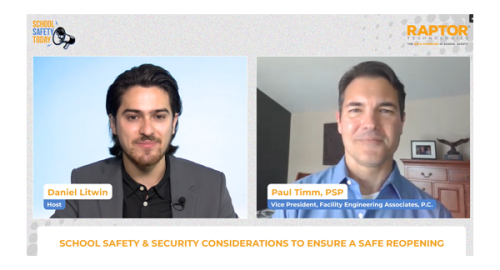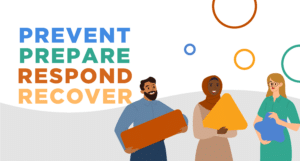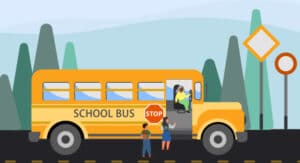“Our children are coming back to campus. Who knows what we’re going to face in just a few short months…Now is the time to get prepared,” warns Chief Frank Kitzerow.
As the Police Chief and Certified School Specialist at Palm Beach County School District, Chief Kitzerow, who recently retired, was responsible for overseeing safety for the tenth largest school district in the U.S. He recently shared how K-12 schools can better prepare for and respond to emergencies on an episode of School Safety Today.
A summary of the conversation is below. Listen to the full episode of our podcast, Returning Safely: Navigating School Safety and Emergencies.
Pay Attention to Your Community
Many schools, communities, and industry experts are concerned about the safety issues we will see as students and staff return to the classroom. “Our students have been quarantined for a year… life in general for them has changed,” Chief Kitzerow comments. “My advice to school districts is to pay attention to their communities.”
Chief Kitzerow warns, “as we see gun violence and all the things happening in our society now, it’s not unrealistic to expect that we’ll see some significant school safety challenges going forward.” He recommends schools watch the news to stay updated on what is impacting their students and staff. This can help school leaders better understand what attitudes and beliefs people may bring into school, as well as give insight into what types of school safety incidents may happen.
Establish a School Safety Ecosystem
School safety is a 24/7 operation. A major component of time is spent ‘left of the X,’ meaning that the school is focused on prevention, intervention, and diversion of catastrophic events. “If we can get out in front of things, identify a particular grievance, and stop a potential attack before it happens, we save all of those lives,” Chief Kitzerow shares.
Prevention is key, but it’s just as critical to be prepared. Each school must have a robust school safety ecosystem, which is a toolbox of various components that can help schools quickly and efficiently respond to incidents. The toolbox considers things like safety and security, response and recovery processes, and what technology or software the school will use to prepare for and streamline emergency response.
When thinking about what technology to include in your ecosystem, Chief Kitzerow recommends schools start with an assessment. “It’s never a one size fits all. Take inventory of what you have now, what’s working for you, and if you are using [the technology] to the best of its ability.” Consider if you are truly prepared for violent attacks, and whether you have the resources to save the lives of everyone on campus.
Collaborate with Key Stakeholders
Working with key stakeholders—students, parents, staff, first responders, fire departments, school resource officers (SROs), for example—helps schools create holistic emergency management approaches. Including these stakeholders in planning, and practicing with them during drills and exercises, “will make a big difference” to the school’s safety, Chief Kitzerow claims.
This collaboration also helps schools create intentional relationships with first responders and law enforcement agencies. Chief Kitzerow warns, “If you don’t have a relationship [with first responders], there are some pretty big consequences, such as struggling to get the information you need during emergencies.”
Have Clear, Accurate Communication
Schools must have reliable methods to communicate with students, parents, staff, and first responders and maintain situational knowledge during crises. “Time is not our friend during emergencies,” he says. “Think about what information you need to make informed decisions [during the incident] and what processes you can put into place to handle these situations quickly and effectively.”
You also need to prepare your teachers and staff for emergency response. These stakeholders are key, as they are the ones typically on the frontline. “It’s important upfront to build the plans, practice those plans, and make sure everyone is well-versed” in the protocols, Chief Kitzerow recommends.
Have SROs and Mental Health Professionals on Campus
“Policing in a school district is very different [than traditional law enforcement]. The approach is different… The training is different,” Chief Kitzerow shares. For example, imagine there is a student acting out in a classroom. A traditional officer would enter the classroom and attempt to remove the student. The student may refuse to leave, and the situation could escalate to the student being charged with assault or resisting arrest.
An SRO would take a different approach, first by asking others in the classroom to leave and then by attempting to deescalate the situation by having a conversation with the student. “In many cases, we discover the student is homeless or hasn’t eaten,” Chief Kitzerow shares. Once the SRO understands the root cause of the situation, they help the student resolve the issue. “Our job is to do everything we can to make students successful and provide them with a safe and secure environment.”
Chief Kitzerow continues that SROs and mental health professionals should work together to help students. “It is 100% critical that mental health professionals and law enforcement combine their resources and do the things that need to be done for our students,” he says.
Evolve as the School Safety Landscape Changes
There are will always be new considerations around school safety to account for. Subscribe to our podcast, School Safety Today, on Apple Podcast or Spotify to get more advice and best practices from leading school safety experts.





